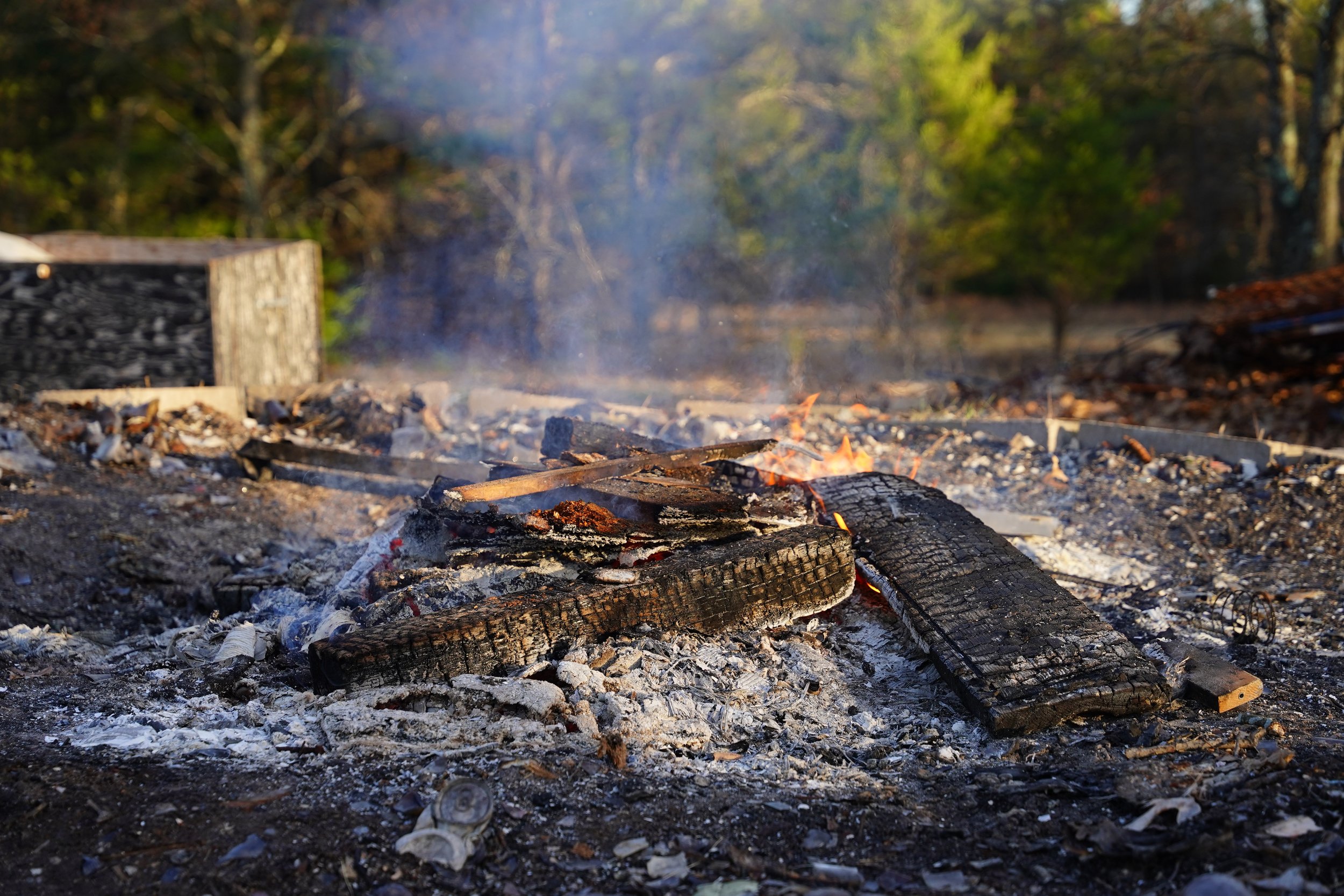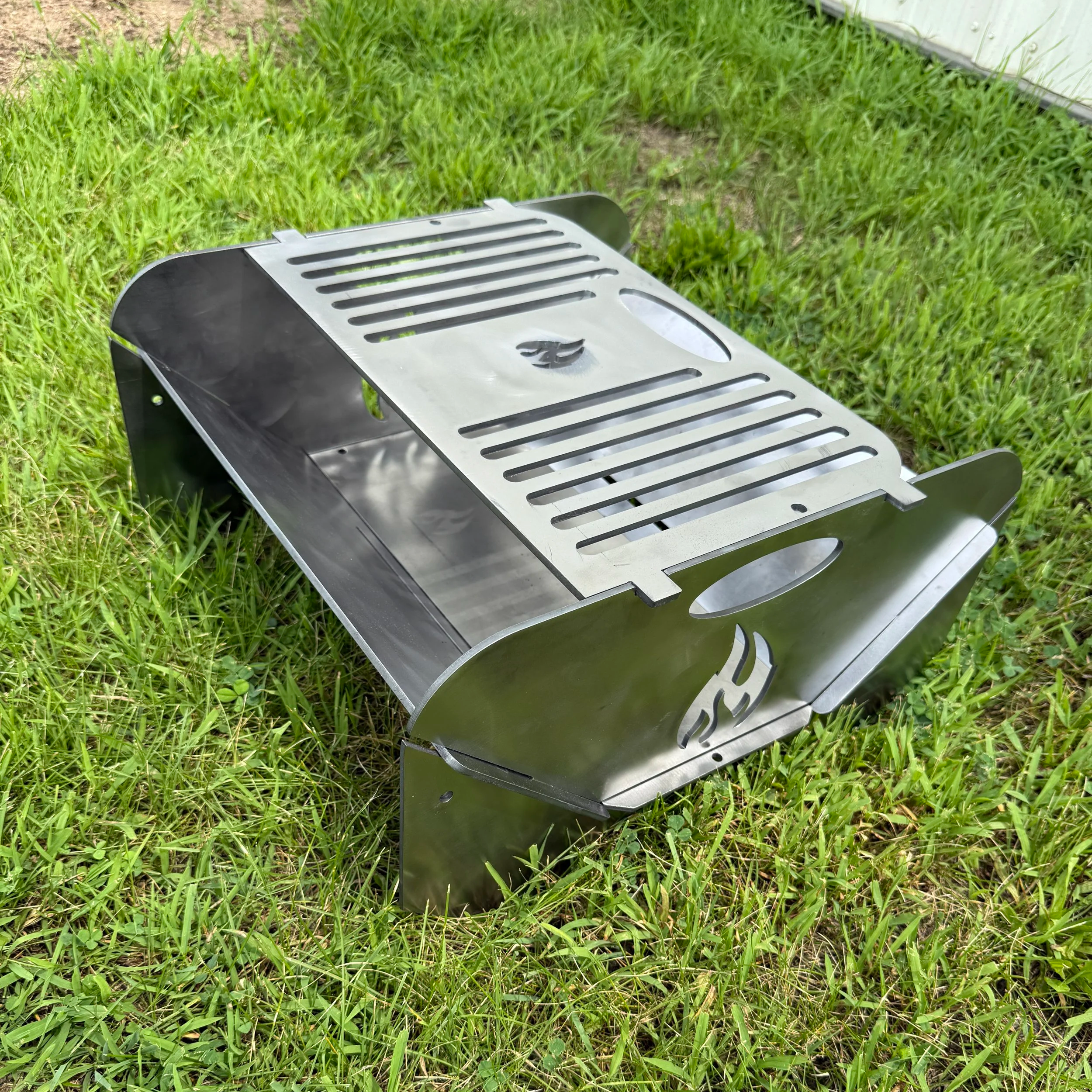What Do You Burn in a Fire Pit
Sitting around a fire pit with friends and family is one of the best ways to enjoy a cool evening. The smell of smoke, the crackling sound of burning wood, and the warm glow of the fire create a cozy atmosphere. But to keep everyone safe and the environment healthy, it's important to know what you can and can't burn in a fire pit. Let's explore the best and worst materials for your fire pit, along with some tips for a safe and fun experience.
Safe Materials to Burn in a Fire Pit
✅ Charcoal
Charcoal is a classic choice for fire pits. It burns slowly and steadily, providing plenty of heat. After the initial smoke, it burns clean, making it great for cooking marshmallows or hot dogs. It's easy to light and doesn't produce a lot of ash, so it's perfect for a long, enjoyable evening around the fire. Just make sure you use the right amount of charcoal.
(And if you happen to be grilling, you can use a charcoal chimney to light the charcoal more easily. We even have a guide on how to use a charcoal chimney.)
✅ Hardwood
Hardwood is another excellent option for your fire pit. Types of hardwood include oak, maple, and birch. These woods burn longer and cleaner than other types, producing less smoke and leaving less residue. Hardwood is dense, so it takes a bit longer to catch fire, but once it does, it provides a steady, long-lasting flame. Always use seasoned hardwood, which means it's been dried for at least six months. This helps it burn more efficiently and produces more heat.
✅ Softwood
Softwood, such as pine or cedar, ignites quickly and creates a bright, lively flame. It's perfect for kindling to get your fire started. However, softwood burns faster and produces more smoke and ash than hardwood. You can use softwood to get your fire going, then add hardwood to keep it burning.
✅ Gas
Some fire pits are designed to use gas, like propane or natural gas. These types of fire pits are very convenient. They burn clean with almost no smoke and are easy to control. If you have a gas fire pit, make sure you only use the recommended fuel.
🚨 Note: ONLY use gas if your fire pit was specifically designed for it!
✅ Bioethanol
Bioethanol is a type of fuel made from plants. It's a renewable energy source and burns very cleanly, producing almost no smoke. Some fire pits are specially designed to use bioethanol. It's a great choice for an eco-friendly fire pit experience.
🚨 Note: ONLY use bioethanol if your fire pit was specifically designed for it!
✅ Fruit Woods
Fruit woods, like apple and cherry, are not only safe to burn but also provide a delightful smell. They give off moderate heat and a pleasant aroma that adds a nice touch to your evening.
Just be careful with certain fruit woods, like cherry, which can spark. Always keep an eye on your fire when burning fruit woods.
✅ Wood Bricks and Pellets
Wood bricks and pellets are made from recycled sawdust and wood chips. They are compact, easy to store, and burn cleanly. These are great for roasting marshmallows and hot dogs. Just make sure your fire pit can handle these types of fuels, as some require special holders or baskets.
✅ Switchgrass and Soy Logs
Switchgrass and soy logs are another eco-friendly option. Made from a mix of soybeans and switchgrass, these logs burn cleanly and leave very little residue. They also give off a pleasant, sweet scent.
✅ Recycled Coffee Grounds
Surprisingly, old coffee grounds can also be used as fuel for your fire pit. They produce a faint coffee smell and help keep waste out of landfills. Special logs made from recycled coffee grounds are available and can be a fun and interesting fuel choice.
Materials to Avoid Burning in a Fire Pit
🚫 Pressure-Treated Wood
Pressure-treated wood is often used for building decks and fences. It's treated with chemicals to prevent rot and insects. Burning this wood releases toxic chemicals into the air, which can be harmful to your health and the environment. It's also illegal to burn pressure-treated wood in many places, so always avoid it.
🚫 Plastic
Burning plastic is a big no-no. When plastic burns, it releases harmful chemical fumes that are bad for you and the environment. Melted plastic can also damage your fire pit. Instead of burning plastic, recycle it or find other ways to repurpose it.
🚫 Magazines and Newspapers
While it might seem harmless to burn old magazines and newspapers, it's actually not a good idea. The ink on these papers can release toxic fumes when burned. Glossy magazines often contain plastic-based materials that also produce harmful chemicals. Stick to plain, unprinted paper if you need something to help start your fire.
🚫 Cardboard Boxes
Cardboard boxes can burn quickly and create a lot of flying ash. The ink on them can release harmful chemicals when burned. It's better to recycle cardboard boxes instead of burning them in your fire pit.
🚫 Weeds
Burning weeds, especially ones like poison ivy, poison oak, and sumac, is dangerous. These plants contain oils that release fumes when burned, which can cause severe allergic reactions and respiratory problems. Always avoid burning any unknown plants or weeds.
🚫 Accelerants
Using accelerants like gasoline or lighter fluid can be extremely dangerous. They can cause the fire to flare up uncontrollably and even lead to explosions. It's best to start your fire the old-fashioned way, using kindling and a match.
🚫 Driftwood
Driftwood often contains salt and moisture, making it difficult to burn. The salt can release harmful chemicals when burned, so it's best to avoid using driftwood in your fire pit.
🚫 Construction Wood
Construction wood is often treated with chemicals to prevent rot and insect damage. These chemicals can be harmful when burned, so never use leftover construction wood in your fire pit.
🚫 Painted or Treated Wood
Painted or treated wood, like pressure-treated wood, contains chemicals that release toxic fumes when burned. Avoid burning any wood that has been painted or treated to keep everyone safe.
🚫 Green or Soft Wood
Yes, we know we already put soft wood in the “can burn” section! But while technically it’s safe to burn soft wood, freshly cut or green wood contains a lot of moisture, making it hard to burn. It produces a lot of smoke and doesn't burn efficiently. Softwoods with high resin content, like pine or fir, can also create excessive smoke and sparks, making them less ideal for a fire pit.
Best Practices for Fire Pit Safety
To enjoy your fire pit safely, we’ve compiled a list of guidelines to keep in mind.
Store Wood Properly
Keep your firewood dry and well-ventilated. Store it off the ground to prevent moisture from getting in. Properly stored wood burns more efficiently and produces less smoke.
Use Kindling
Start your fire with small pieces of dry twigs, plain paper, or commercial fire starters. Softwood works well for kindling because it ignites quickly (though it shouldn’t be used for longer burns).
Monitor the Fire
Always keep an eye on your fire. Make sure it stays within the designated area and doesn't spread. Keep a fire extinguisher, sand, or water nearby in case of emergencies.
Stay Safe, Burn Safe
Choose your firewood carefully and follow local regulations. Some areas have rules about what types of wood you can burn, especially concerning air quality. Check with local authorities to make sure you're in compliance.
If you want to find out the regulations for your state, We Love Fire published a great directory on Open Fire Regulations in the U.S.A., with appropriate links for each U.S. state.
Keep a Safe Distance
Ensure that your fire pit is set up in a safe area, away from flammable materials like dry grass or leaves. Keep children and pets at a safe distance from the fire pit, and never leave the fire unattended.
Extinguish the Fire Properly
When you're done enjoying the fire, make sure to extinguish it completely. Use water or sand to put out the flames, and stir the ashes to make sure everything is cool. Never leave a fire unattended until it's fully out.
Check out our definitive guide on how to put out a fire pit if you want more detailed instructions.
Conclusion
Gathering around a fire pit is a wonderful way to spend time with friends and family (especially if you have a nice portable fire pit to bring with you on camping trips!) By choosing the right materials to burn and avoiding harmful ones, you can ensure a safe and enjoyable experience. Remember to follow best practices for fire pit safety, and you'll create warm, lasting memories without any worries. So go ahead, light that fire, and enjoy your time together!










